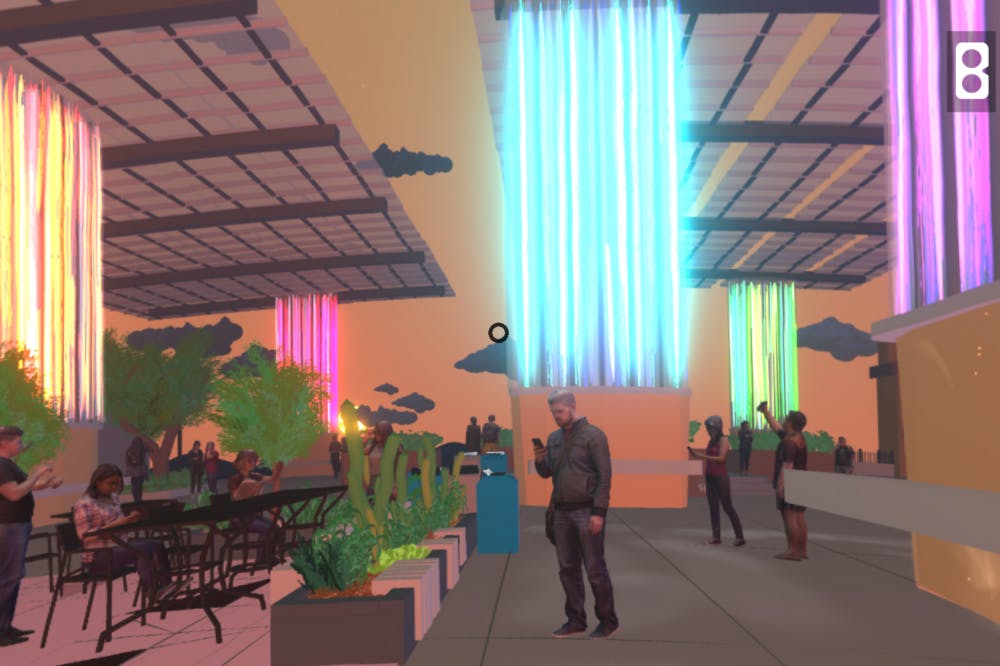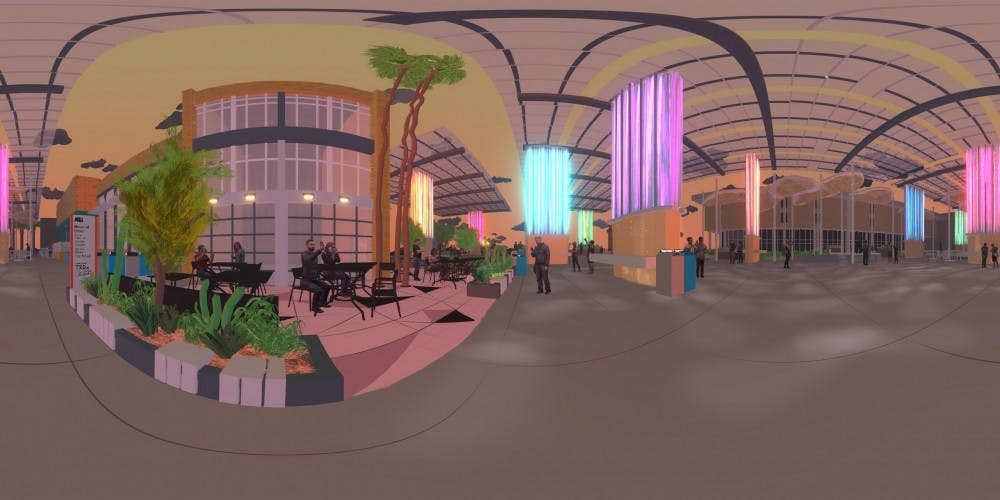Software engineering senior Alireza Bahremand gave a talk on the technology behind mixed and virtual reality at the 2018 TEDxASU: Boundless event at ASU on March 31. Bahremand shared his experience of preparing for the talk and creating a mixed reality rendering of the Memorial Union with The State Press.
“There’s something here. We have a lot to work with, and a lot to work on, but this is good," my friend Rajan Patel said as he jotted down several bullet points on a piece of paper on a Friday afternoon, five months before the TEDxASU event. Patel and I were trying to figure out how my interest with augmented and virtual reality technology could connect with a audience of varied disciplines.
As we continued crafting my talk, it became clear that the foundation would be based on one of two things: what I knew, or what I was doing. I knew that I could be technical and try to show the audience how impressive this technology is, but the problem is that the technology speaks for itself, and me trying to shed light on it isn’t memorable. My goal isn’t to impress the audience, it’s to connect with them, so it made sense to talk about what I was doing.
It’s quite easy to talk about personal passions and interests, but it is difficult to connect those with someone else’s. Yet, for many TED Talks, the presenter is discussing their passions and interests, and it connects so well with the audience. As I watched hours of TED Talks it became clear that I needed a bridge to connect with others. That bridge would come to serve as my idea.
But I realized that we remember good TED Talks for two reasons: How the speaker presents themselves on stage and how their idea came to be. The execution and connection of their idea is more important than the idea itself.
Read More: TEDxASU speakers see 'boundless' potential for this year's event
Therefore the point around which I would connect with the audience would be how I found direction in life, something that I realized was a main concern of a student population.
I found direction in life thanks to the technology I work with, but this wasn’t the sole reason. Since childhood, technology was a tool I used to further push my boundaries and to open up more doors of opportunity for my skills and interests. This was my edge and something I have spent years doing. The question now became: how do I develop this into a simple, precise idea?
For TEDxASU, there was a timeline to follow with several milestones laid out. Within the duration of five months, the speakers would first create a title, then an outline, followed by several rounds of presenting the talk and revising it based on feedback.
A playlist of Bahremand's favorite TED Talks.
In my experience, it appeared as though the goal of the organizers was to help shed light on an idea. In other words, we needed to make it clear to them what our idea was and how our talk executed that idea. And this is what makes or breaks a good TED Talk.
As I crafted my talk, I realized that I was still missing something. I had my idea set in stone, but I didn’t really give much to the audience to get them excited about the coming era of mixed reality technology. I needed something to show them how influential the technology is, and I wanted to give the audience something that moves beyond the talk and its idea. I wanted to put my skills to practical use to complement my talk because one thing that deeply mesmerized me from my favorite TED Talks was the speakers' skills live on stage.
I love coding and drawing, and I’ve come to develop a strong workflow that utilizes both of these skills. By combining my skills, I could create something that would excite the audience about the mixed reality era of technology. After more than 40 hours, you can find that creation here:
I’ve been very fortunate to be a participant of this year's TEDxASU event, and I’m proud to have been a part of the group of speakers that presented this year. Additionally, I’m thankful the organizers were such determined, amazing people working hard to bring this event to life.
My takeaway from it all is that if you’re really passionate about something, share it with others in a public setting. The influence one idea can have on many is magical and something I encourage everyone to explore.
Reach the author at Ali.Bahremand@asu.edu or follow @lirezaBahremand on Twitter.
Like The State Press on Facebook and follow @statepress on Twitter.





